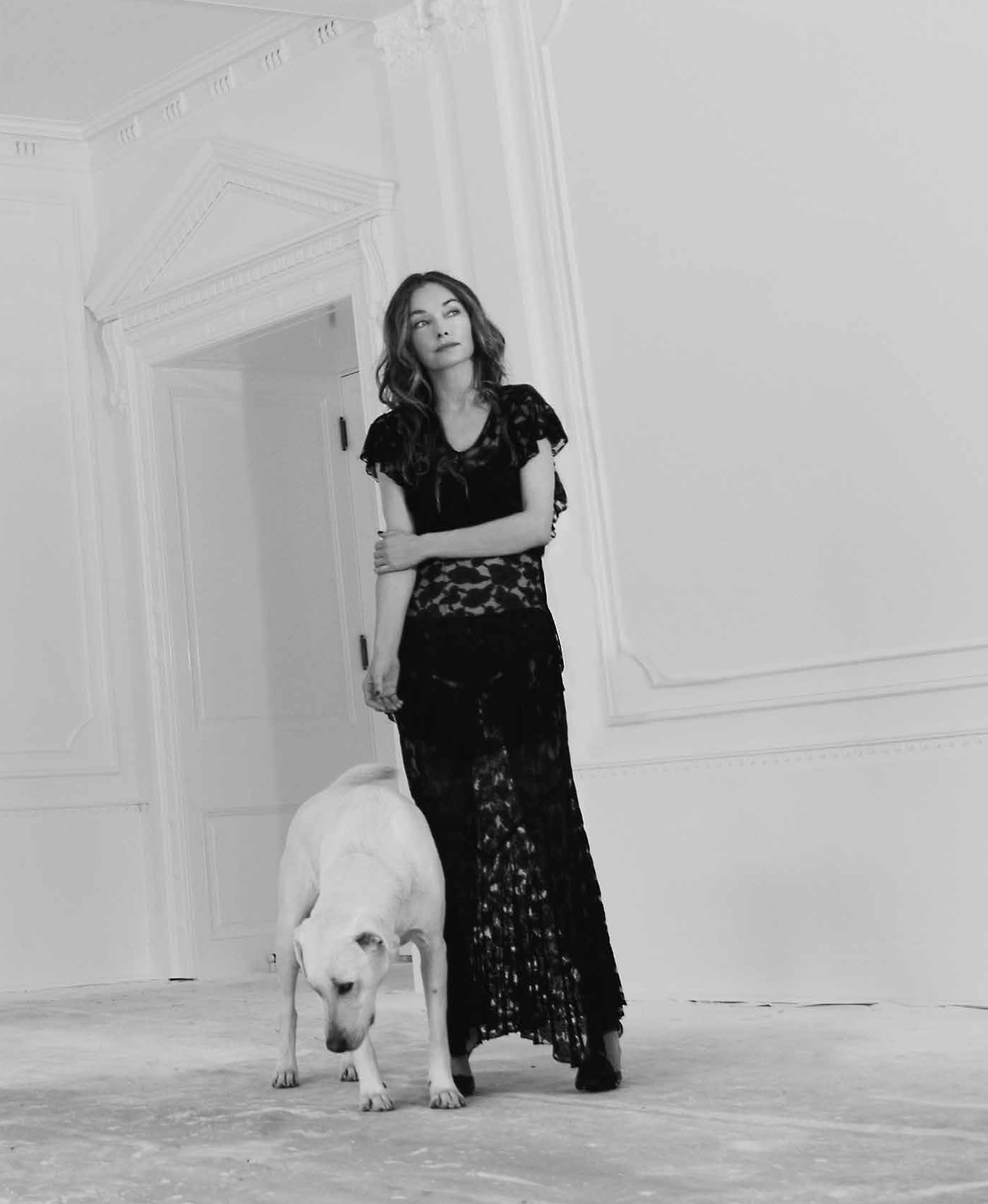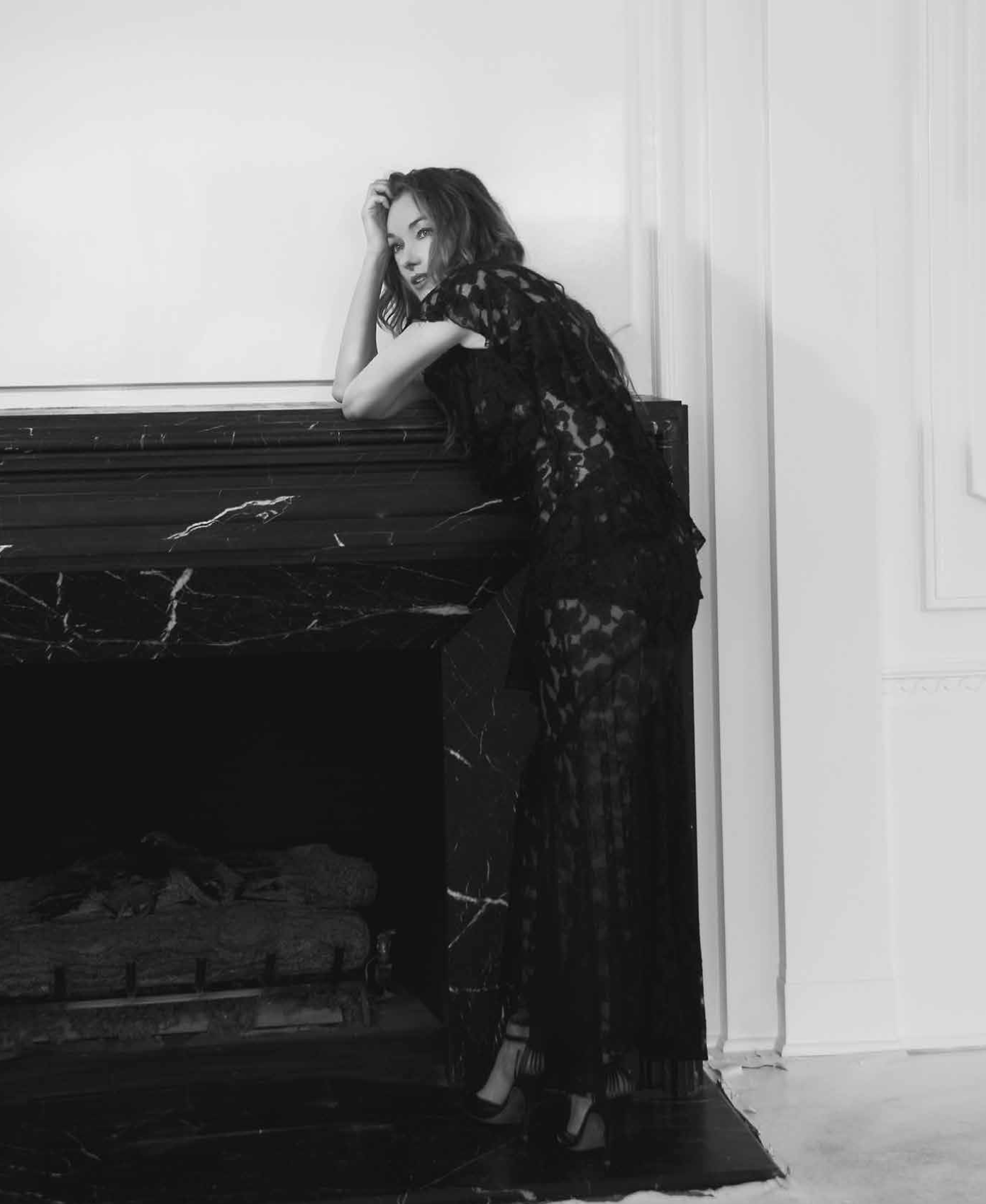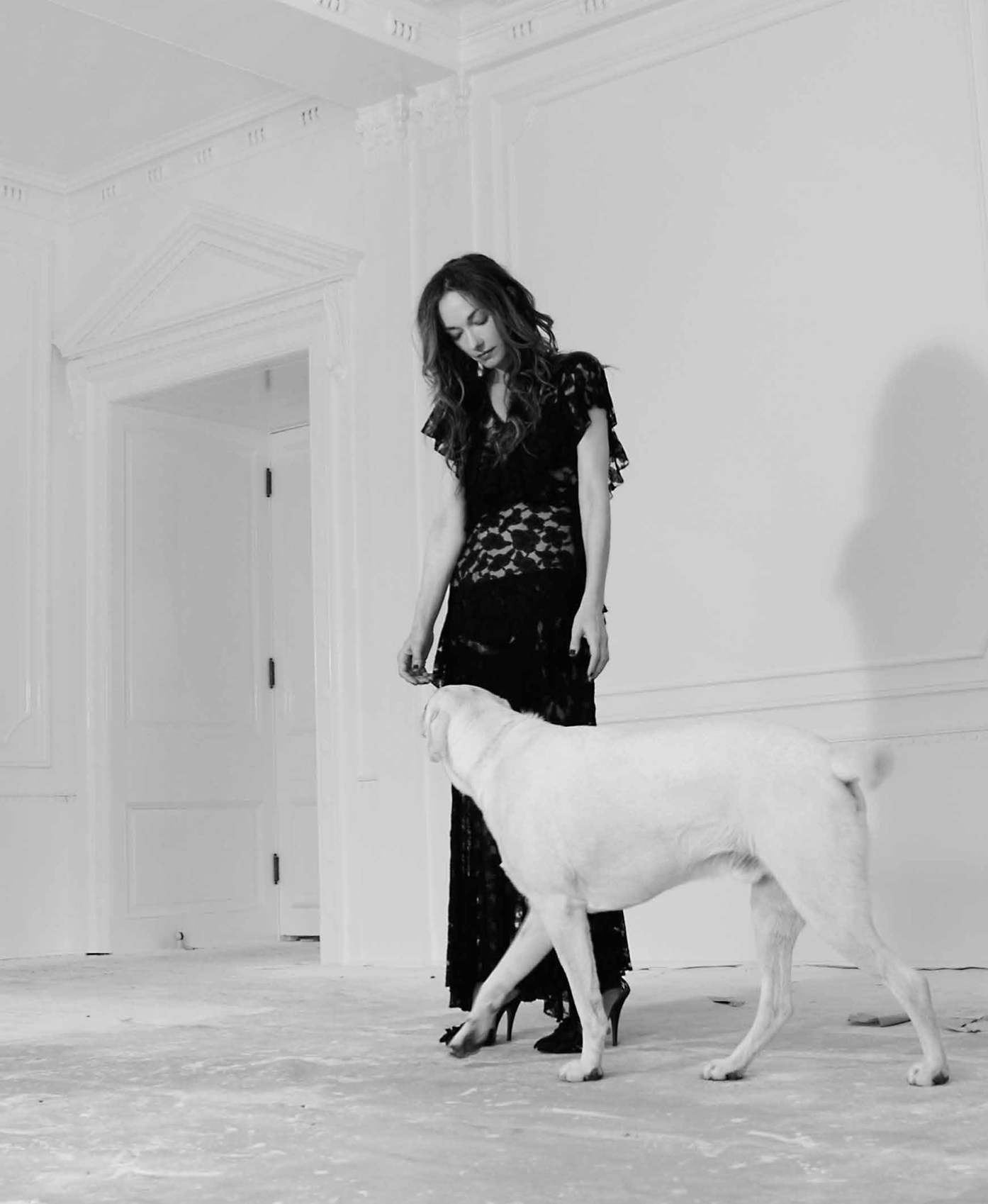KELLY WEARSTLER
Interview by Michael Bullock
Portraits by Therese + Joel
PIN-UP 17, 2014

THE LAID-BACK L.A. MIXOLOGIST WITH A KNACK FOR MAKING THE BEST OF EVERYTHING
Mention Kelly Wearstler’s name in interior-design circles and you’re bound to get a strong reaction. While most of her contemporaries are content to liven up the status quo with an occasional conversation piece, in Wearstler’s interiors almost everything is a conversation piece. Rather than reverting to clichéd total looks — bohemian adobe, Nantucket beach house, meditative minimalist sanctuary — Wearstler has a mixologist’s flair for bringing together unlikely ingredients: in her designs Art Deco, French antiques, Memphis, and mid-century modern are all put through the blender and combined with contemporary design stars, from Max Lamb to the Haas brothers, or special artist commissions by the likes of Shantell Martin. Wearstler’s bio is just as colorful as her unapologetically flamboyant approach. She can easily lay claim to being the only designer whose resume includes stints with both graphic-design icon Milton Glaser and Playboy founder Hugh Hefner (she famously founded her Los Angeles-based firm in 1995 with money she earned as a Playmate). After some of her early residential commissions won wide acclaim, real-estate developer Brad Korzen hired her to design his bachelor pad. The two were married in 2002, had two sons, and embarked on multiple business ventures together, including the Viceroy Hotel Group (of which Korzen is the CEO). Wearstler also started her own jewelry and home-accessories lines and opened a namesake store on Melrose Avenue in West Hollywood. With a slew of hotels and celebrity homes under her cinch belt (Cameron Diaz, Gwen Stefani), the former Top Design judge now runs a design studio of over 40 employees. I was notified that on the day of our interview she was to have an “extremely important” presentation with a client. Yet when she greeted me she was the picture of calm, dressed casually in acid-washed jeans and a ripped T-shirt. In conversation she gives brief, direct answers, and is always delighted to share the many things she loves. In fact, she is so focused and unfailingly positive that she could easily have a second career as a motivational speaker.
You seem so relaxed. Didn’t you have a big presentation today, pitching a new project all morning?
Yes, it’s a retail project and it’s enormous. The clients are in town and then next week their Australian partners are coming, so it’s been busy. But I have a very calm temperament.
Given that the studio has so many projects going on at the same time, I thought your job would be more that of a creative director — setting the tone and managing the teams — but actually you’re very hands-on.
It’s so important for me. When architecture and design firms get really big they lose something — some projects are great and some aren’t. I don’t have A, B, and C interior teams: when we sign on, whether it’s a residential or a commercial project, everyone gets the a team. For example, on this new hotel project, I literally found every image for the mood board myself. I have an amazing team with very talented people here, but you have to be involved in all parts, from the architecture to the furniture, to the experience of things, like the glasses the customers are holding. It’s like telling a story. If you start and somebody else finishes the story, it takes a detour. And I want every project I put out to be amazing.
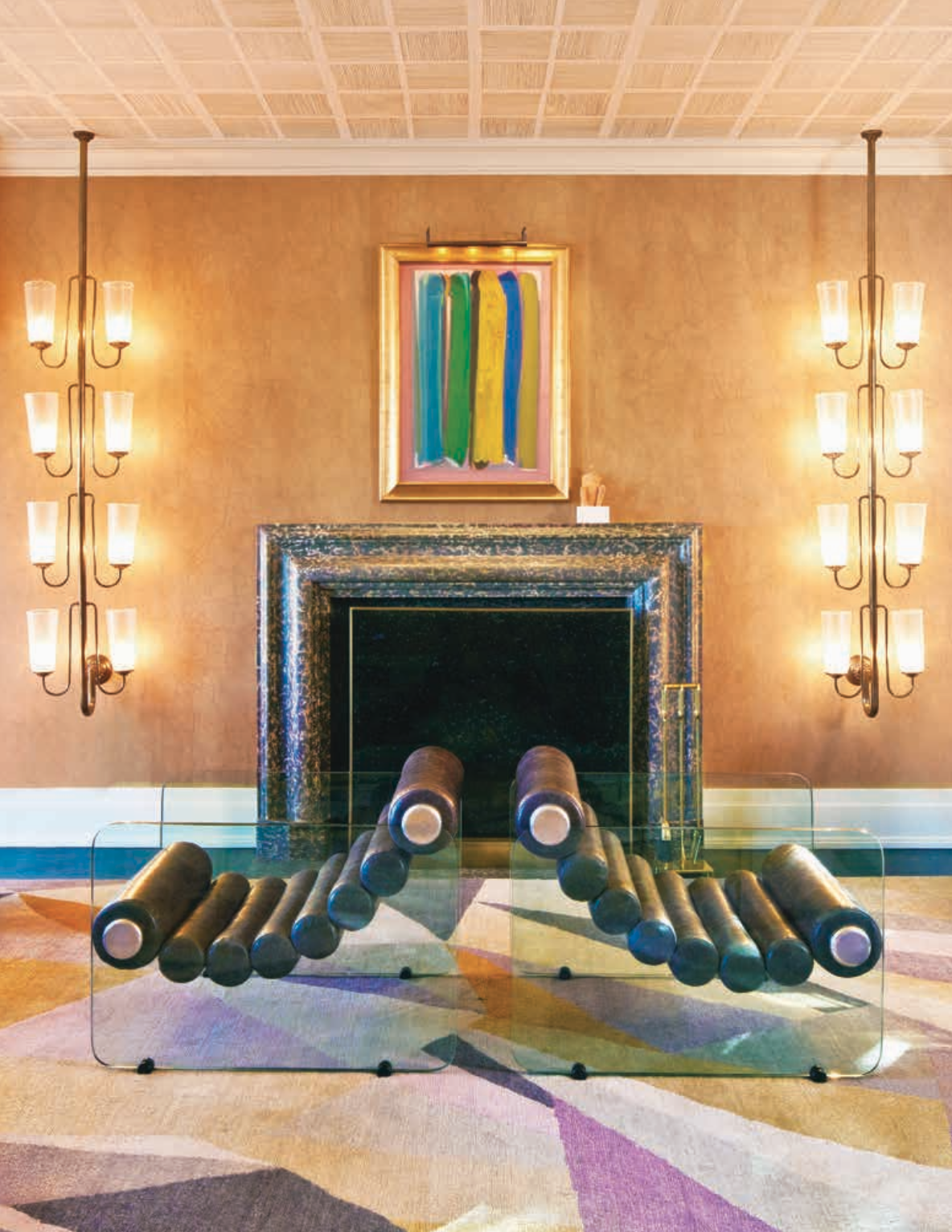
That must be difficult to maintain as you grow?
We have about 40 people now, and we can handle up to 45 in this office. But when you get beyond that, it’s too much. I want to stay a boutique firm. I enjoy being able to learn something from every project, because each client is so different. and they all know what they want, and then they give that to me, and then I run that through my filter. That’s what it’s about: continuing to be challenged and evolving.
Where did you grow up?
Myrtle Beach, South Carolina. My mother was an antiques dealer and she loves interiors, so furniture was constantly moving in and out of our house. and the wallpaper and carpets were always changing, which was fun.
So decorating was in your DNA?
Exactly. I was always drawing and making things. and when I was five years old I came up with this idea for a little shop. I would make things out of paper, fabric, cartons, and cans, and when relatives or family friends would come over I would lay all the objects out on a table and put price tags next to each item. I called it “The Bunny Shop.” [Laughs.] Every birthday my mother still sends me something from that store.
Was your parents’ home as glamorous as your work today?
Oh god, no. It’s so different! Their style was country and there was stuff everywhere — there wasn’t even a place to put a cup down.
But you’re also a bit of a maximalist.
It depends on the client. If you look at my work from the beginning until now, I used to do everything with color, then my clients wanted everything neutral and about texture. I love that because white is a color, black is a color, and beige is a color. People don’t realize that. There’s an art to putting those colors together with different tones to give dimension to a room.
Are there specific rooms you prefer designing over others?
I love doing bathrooms because I love working with stones. I’m a total stone junkie. I go to all the stone shows: in Paris, in Denver, you name it. To me stones are architecture, and I love architecture!
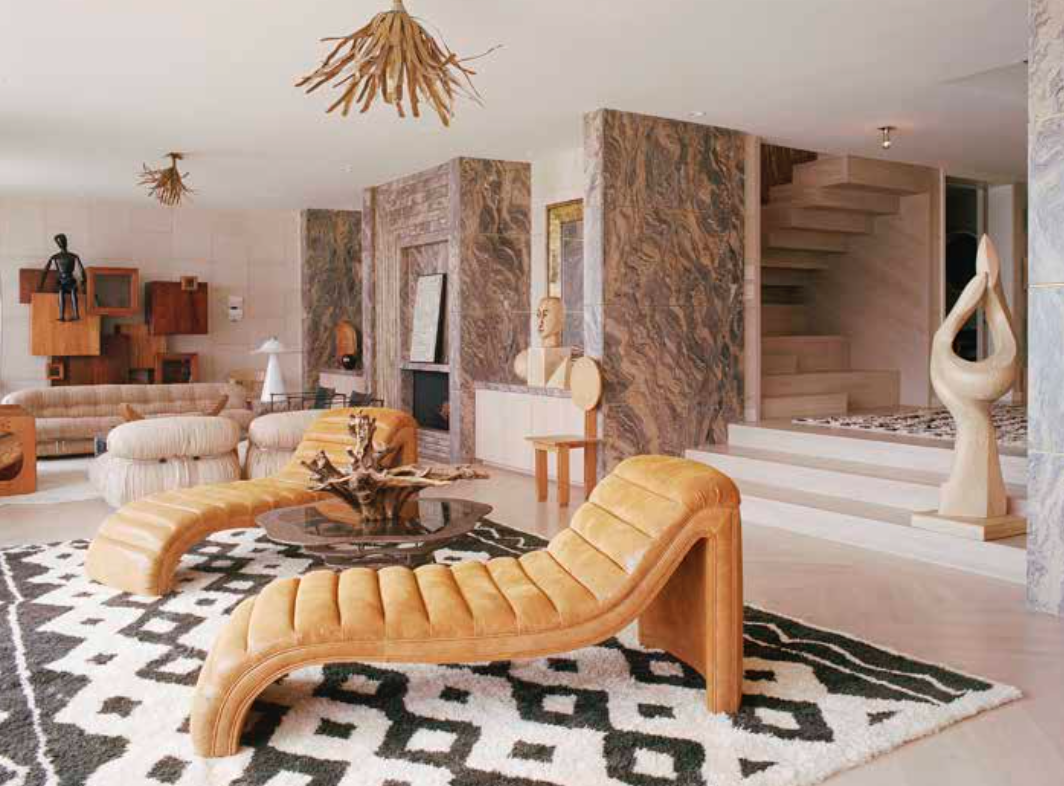
What did you study in college?
I went to school in Boston at Mass Art [Massachusetts College of Art and Design] and then I did a year at the School of Visual Arts in New York. For the first year I was a graphic-design major and then I switched to architecture and interior design, and I finished both.
How did you end up working for Milton Glaser?
I wanted to work with somebody who really had a strong voice. His work is iconic and there’s a playful quality to it. and, you know, he also designed interiors. he did this great restaurant in New York, the Trattoria Dell’arte [1988], which has these enormous plaster casts of an ear and a
mouth as its centerpieces.
If I name a few names, can you describe what kind of influence they had on you?
Sure. This is fun!
David Hicks.
I learned about him early on in school. I love him. He was a risk taker and his use of color is truly unique. Yes, he was amazing.
Pedro Friedeberg.
A few years ago we were doing a project in Mexico with Ricardo Legorreta. Ricardo has since passed away, but he was friends with Pedro and invited him over to his office when I was visiting. I was so exited to meet him. He’s in his late 70s, but he’s still working. I commissioned him to do a lot of stuff. We asked him to design beds for the kids’ room, and he sent all these hand sketches. Those wacky cute little drawings of cats on the bed are by him.
Peggy Guggenheim.
She was amazing and her house in Venice was beyond! You know, when people ask me, “who is your style icon?”, most of the time they just think about how people dress. But it’s how you live, your lifestyle, and your whole persona. Peggy got architecture, she got art, interiors, clothing — she was so chic in every way.
Peter Shire?
He’s so cute and sweet. We’re actually doing some stuff with him right now — we commissioned him to do two cabinets which should be ready sometime towards the end of this year.
For a design project I couldn’t think of better references than Milton Glaser and Playboy magazine. I’m sure you’re sick of talking about your Playmate days, but I was curious how that experience influenced you?
[Laughs.] Well, the human body is beautiful. Art history was my favorite subject because I loved learning about all those classical sculptures and those fragments of the body. and I love Surrealist art, which always uses the body. So I guess there’s overlap between the two. [Laughs.] But, you know, I always wanted to be a designer and design. I paid my way through school and college, I paid my rent, I paid everything myself and worked very hard for it, and it’s important to know that wherever you come from, and whatever your journey is, if you’re honest and focused you can make it.
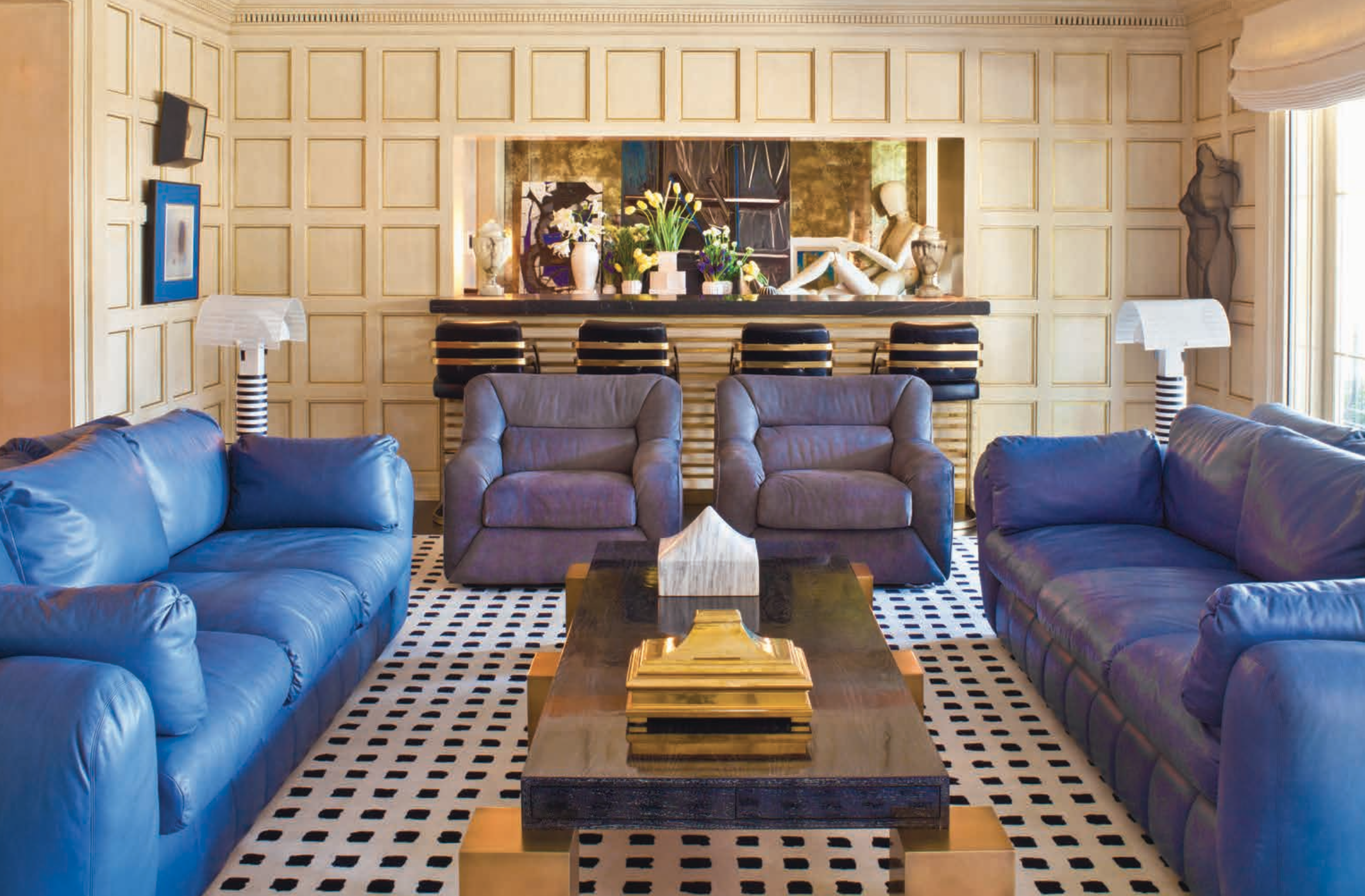
What made you decide to set up your studio in Los Angeles?
Boston and New York were amazing places to go to school because I came from South Carolina, where there was nothing. But for me nice weather and having a peaceful setting are so important, and New York is just so intense. I came to California to visit a friend and I fell in love with it. It reminded me of South Carolina and I like having the ocean and the mountains nearby. And there’s great culture here, great architecture. And life is just easy here.
Would you describe your style as very Hollywood?
Not at all. I don’t think Hollywood has anything to do with how I design. It really comes from taking risks and doing what’s in your heart — and of course being a great listener to your clients and respecting the program of every project. People often say, “Oh, glamour and Hollywood!”, but it’s not that at all. And then there’s this whole “Hollywood Regency" thing. I have no idea what that even means. That expression drives me crazy!
From what I understand Hollywood Regency is embodied by Woodland, the famous 1940s house Jon Wolfe and James Pendeleton designed for movie producer Robert Evans. The funny thing is that when you google Hollywood Regency your name is one of the first that comes up.
No way! My god!
Is there a term you’d prefer?
No, because it changes all the time. I’m always evolving. I guess I would say... mixologist? Because I love mixing furniture, time periods, textures, unexpected color combinations — that’s what I feel I’m really good at.
Which contemporary designers are you interested in?
I love what the Haas brothers are doing. They have a distinctive voice and it’s hard to find that. Different artists send us their work all the time and you can see the ones that truly stand out, they’re like diamonds in the rough.
Would you say sex and power have a strong role in your work?
No, not at all.
Your work feels very seductive, though.
Do you want to live in a sterile environment? No. You want to live in something where the lighting is great, and where you look great in the environment, where there’s sensuality to it. And we definitely want to create sexy environments, but I don’t actually think about it. It just kind of happens. The whole process of designing is actually very emotional for me. I can start to design an entire hotel with just one chair I found at Brimfield and then expand on that at a Paris flea market, then shop in London at the auctions. But the way I shop is totally random. In my head I might have a very clear vision of what it’s going to look like, but my team is sometimes like, “what’s she doing?” [Laughs.] I don’t plan it, it’s not on paper.
How often do you go on these furniture hunts?
Once a month I go to New York, and twice a year I go to Paris and London. But I deal with dealers from all over the world: Italy, Belgium, all over — they’re always sending stuff. I always ask for unexpected things. I also say to them, “Please send me something you don’t think I’m going to like,” because then I learn something.
People equate bold interiors with bravery. Why do you think that is?
When you’re working on projects with millions of dollars involved there are big decisions you have to make. You have to be confident.
Did you have that right from the beginning?
I’m naturally a shy person, but I have become more confident as I go on. If you’re not, you’ll never find your own voice or style.
Do you have any other weaknesses?
Chairs! I have so many fucking chairs! you should see my warehouse, it’s like a sculpture. [Laughs.] You can use them in so many different ways; it’s like jewelry to a room.
What was your first project?
It was when I first moved from New York to L.A. and did my own apartment. It was on Detroit Street in Hancock Park, and it was cute. It took a lot of time, though, because I had no money. I literally painted the walls myself, I redid the floors myself, I basically did everything myself. I hired an interior photographer and he shot the place for me and said I should send it to Elle Décor because he was working on a portfolio of up-and-coming designers. I did and I got in. It was awesome. Then somebody referred me to do a project for a friend, and I did two rooms in their house and they thought it was amazing, so I did the whole house. Then someone saw that project and then it just started from there. I always knew I wanted to have my own business and have, you know, The Bunny Shop, but grown up! [Laughs.]
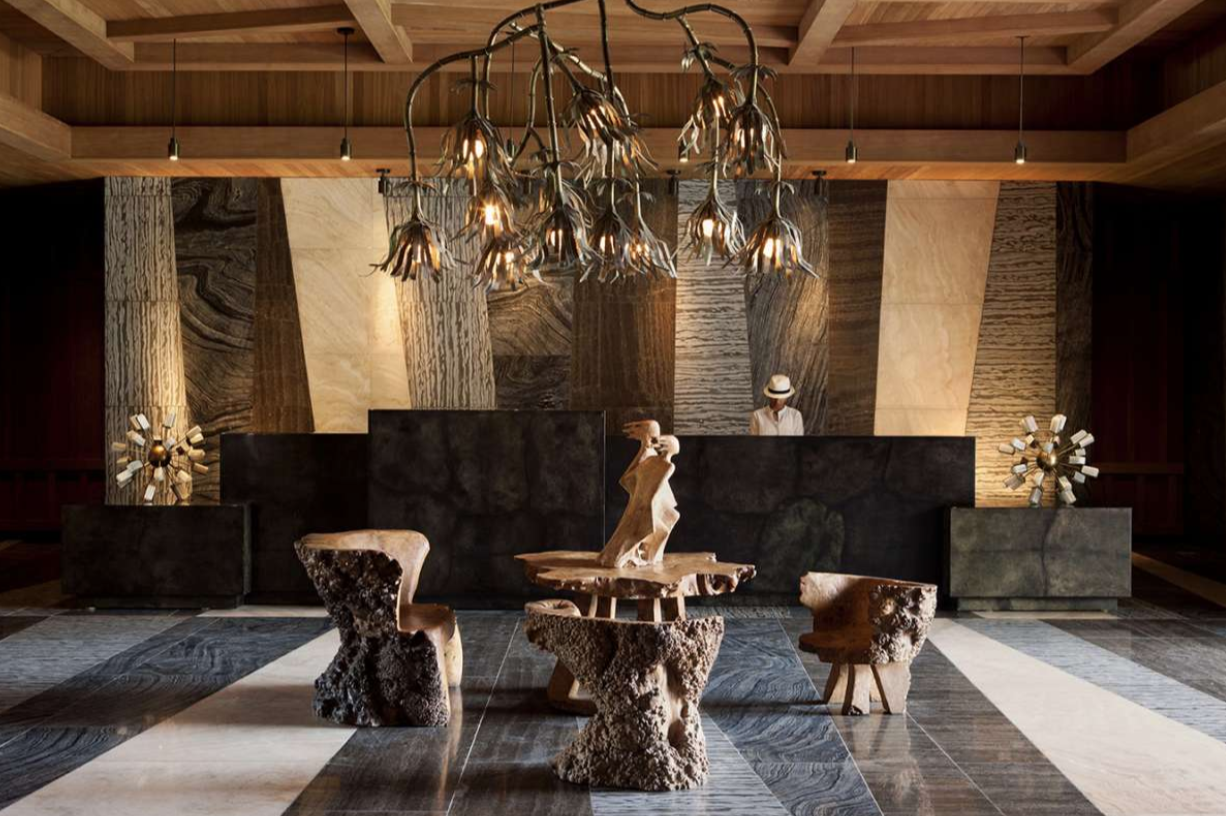
Your husband’s house must have been another turning point then?
Yes, although I wasn’t dating him when I did the house. I had a boyfriend at the time. Brad was just a good friend, and he basically hired me to do his bachelor pad. had I known that I was going to end up moving in there I would have designed it very differently. [Laughs.]
Does your husband ever say, “No, I don’t want that"?
Sometimes. But I like that, because you’ve got to have someone to challenge you. He’s my voice of reason.
The Avalon Hotel was the first big project the two of you worked on together, right?
Yes, in 1998. That was my first big commercial project, and a real breakthrough internationally. Boutique hotels are everywhere now, but back then it was a completely new concept.
What was your brief for The Avalon?
Just to make a cool hotel. [Laughs.] we started by looking at the architecture, of course. you always have to look at the architecture. The Avalon is classic California, classic mid-century — the pool is a classic boomerang shape. It’s such a good hotel. you should go. The food is very good there.
You started out in the minimalist 90s. Did your bold style turn people off in the beginning?
There were some clients that were like, “Oh god, what are you doing?” There were some products where the client really wanted something specific, and we weren’t that successful. But you learn from your mistakes; it’s an upward thing. I know of a handful of interior designers whose clients’ demands have driven them up the wall. Sometimes you really want to say no. although I’m usually easy because in the end they’re the ones who’ll ultimately be living in the house. If a client doesn’t like something there are always 1,000 other ideas. Why harp on one? So it’s no big deal, you just come up with another option, another design. But now I have the luxury of being able to make sure I have great energy with my clients. you want to be on the same page, have the same ideas. If not, it’s not fun for either party.
Gwen Stefani sounds like an ideal client for you.
Yes, and Cameron Diaz. They were awesome, so great and sweet. They’re both artists — they knew what they wanted and it was a total collaboration. we had a lot of fun.
Do you ever think about what kind of impact you want to make?
In the end I just want to make people happy, and for them to feel good and sexy in their environment.
Do you have any sort of dream client, dead or alive?
I would love to design my children’s children’s homes. I don’t even know them yet, but I know it would be awesome.
You’ll probably get to do that.
I mean, I drink enough of this green stuff...
